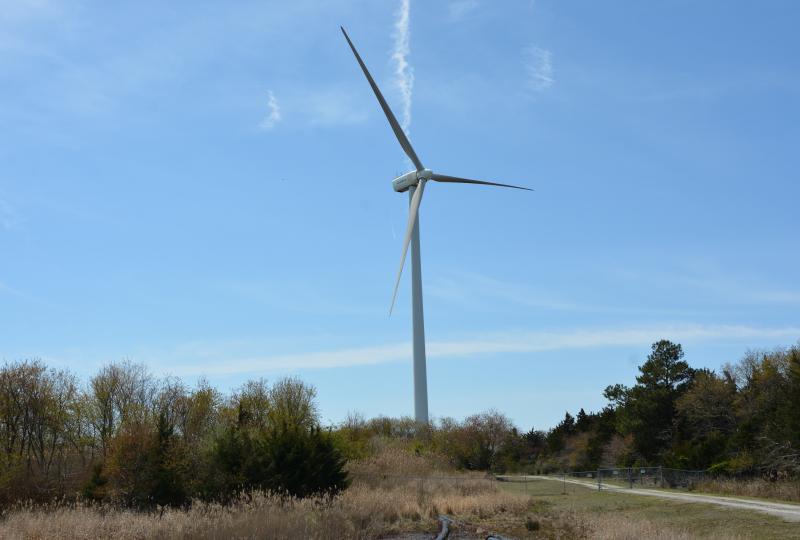New report suggests path forward for wind power in Delaware
A new report from the state and University of Delaware’s Special Initiative on Offshore Wind explores the opportunities and challenges ahead for Delaware as it examines the possibilities of entering the growing offshore wind industry. The report was released April 7.
This is the second study conducted by the state as it evaluates wind power opportunities. The state’s Offshore Wind Working Group’s 2018 report highlighted several options for further consideration, including the state waiting for more developers to enter the market, an incremental approach to wind power, and evaluating other renewable sources.
According to a press release from Delaware Department of Natural Resources and Environmental Control, the new report was done as an update of the opportunities and challenges of offshore wind.
The report, along with the findings put forward by the Offshore Wind Working Group, are essential pieces that will help ensure the state makes the right decisions moving forward, said DNREC Secretary Shawn Garvin, in a prepared statement.
“While it does not address all of the options put forward by the governor’s Offshore Wind Working Group, this new report provides insights into current market conditions, outlines policy options for Delaware, and identifies important tradeoffs based on priorities determined by the governor and state Legislature,” said Garvin.
According to the report, projected offshore wind power prices fall within the range of wholesale power being purchased for Delaware now; offshore wind power costs less than half of Delaware’s current electricity supply when the social costs of health and climate impacts are included; and health damage from polluting power plants is very real, as are health savings from adding renewable energy.
Among the items discussed in the report are ways for the state to reduce the price of offshore wind if it moves forward with that option.
The potential cost-reducing actions by the state are: Setting up procurement to use a power purchase agreement and to prevent any imputed debt implications for the utilities buying power; specify in the request for proposals that the primary criterion for bid evaluation is low power price; encourage more than one Delaware utility to be the off taker; encourage the Bureau of Ocean Energy Management to create more leases near Delaware as part of the current Central Atlantic stakeholder process; create a defined, predictable state process to permit a cable landing from the ocean to the Delaware electric power system; coordinate with Maryland on a single-transmission corridor for Maryland and Delaware projects to lower cost and environmental/community impact; have DNREC review and provide early guidance to developers on compliance with Delaware permitting; have the state install a meteorological buoy in likely near-Delaware lease areas, prior to an RFP.
If the state decides to proceed, the Legislature would need to establish a procurement process, and designate agencies to create and monitor the steps leading to the commercial sale of energy from a wind developer to one or more utilities, says the report.
The state should consider collaborating with Maryland and its wind developers on common transmission planning, says the report. The Maryland wind projects would benefit from a common corridor, and possibly shared lines, through Delaware’s Coastal Zone to an interconnection point such as Indian River substation near Millsboro, says the report.
With an efficient procurement process, competing bids and a bid evaluation emphasizing least cost, Delaware is likely to be able to obtain wind power starting 2027 or 2028 that meets all the legislatively required need for RECs in a single project, at a price within the range of recent power prices, says the report.
Caesar Rodney Institute questions report findings
Not everyone agrees with the idea that power prices will fall within the range of wholesale power being purchased for Delaware now.
David Stevenson, Caesar Rodney Institute Center for Energy & Environmental Policy director, said in reality, offshore wind power will be 3.5 to 5.7 times as expensive as the current wholesale price. It could add $400 to $545 a year to residential electric bills and up to hundreds of thousands a year to some businesses, said Stevenson, in an April 11 response to the release of the report.
Stevenson said the study compares offshore wind power to coal and natural gas-fired power plants, but doesn’t address that there are other viable, and less expensive, options to reduce CO2 emissions such as solar, onshore wind, carbon capture and advanced nuclear.
“New onshore wind, solar and natural gas plants are expected to produce power for $36.49 to $40.23 per MWh, about the same as the current wholesale power cost from our existing regional grid,” said Stevenson. “[Energy Information Agency] projects offshore wind power will cost $136.51, about 3.5 times as much.”
Chris Flood has been working for the Cape Gazette since early 2014. He currently covers Rehoboth Beach and Henlopen Acres, but has also covered Dewey Beach and the state government. He covers environmental stories, business stories, random stories on subjects he finds interesting and has a column called ‘Choppin’ Wood’ that runs every other week. Additionally, Chris moonlights as the company’s circulation manager, which primarily means fixing boxes during daylight hours that are jammed with coins, but sometimes means delivering papers in the middle of the night. He’s a graduate of the University of Maine and the Landing School of Boat Building & Design.
















































